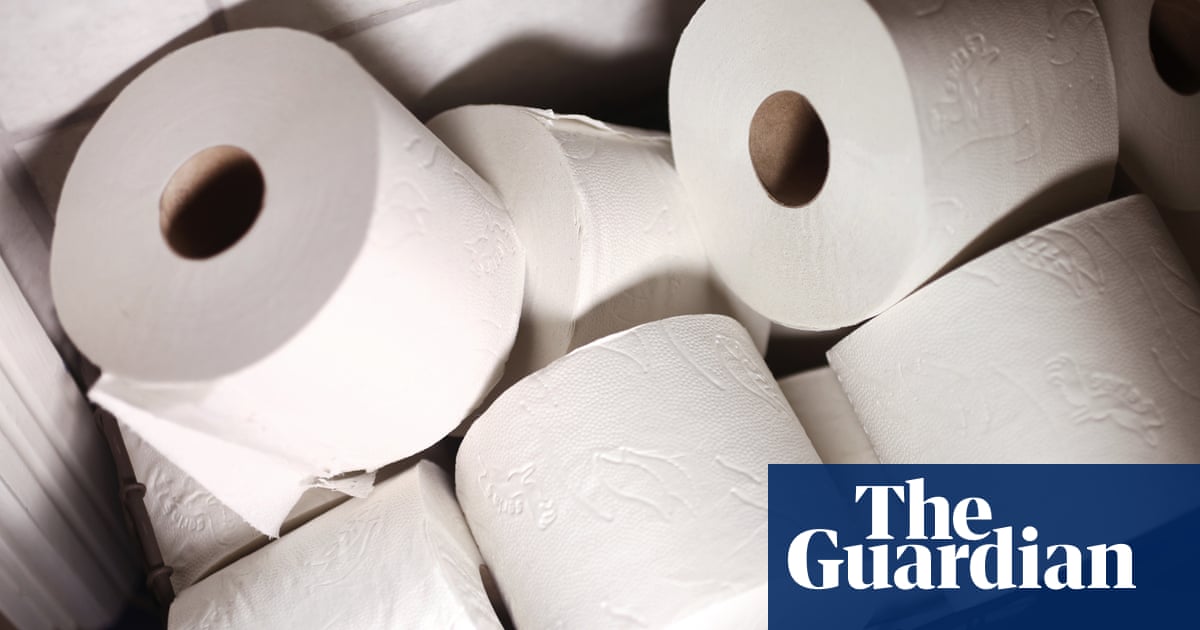
For months I’ve been watching the construction of our new garage. The breeze-block walls have been built, soffits are in place under the eaves, the concrete floor has been poured and slate tiles are being fixed on to the roof. Soon it will be time to render the exterior with sand and cement, to seal and waterproof the walls, to varnish the new fencing, and finish it all off with a shiny coat of paint.
That means a trip to the DIY store, where the shelves are full of marketing appeals. Glossy varnishes promise to colour wood for five years. Fence treatments are UV resistant and rainproof within half an hour and protect against rot. Masonry paint is no longer just about the colour: do I need pure brilliant or ultra-smooth, anti-mould or weatherproof?
Many of these items rely for their seemingly magical properties on PFAS (per- and polyfluoroalkyl substances), known as “forever chemicals”. This group of synthetic chemicals are used to prevent corrosion, reduce friction and make products waterproof and stain-resistant. Used in everything from cosmetics to food packaging, PFAS also show up in paint (as a binding agent and to give a smooth finish), wood lacquers (for repelling oil and water, and stain resistance) and sealants. They are used in the top layer of solar panels, artificial grass and firefighting foams.
PFAS’ incredibly strong carbon-flourine bonds mean these chemicals do not biodegrade. Renovations will not last for ever but PFAS persist and accumulate in soil, water, air, wildlife and our bodies. PFAS have been found in human breast milk and the blood of 97% of Americans. Exposure to some PFAS has been linked to fertility problems, changes in metabolism, and an increased risk of obesity and cancer – yet so much still remains unknown about their long-term consequences.
Eroded by the elements or dumped down drains, PFAS end up in the water system. Once there, remediation – removing the pollution – is impossible. Water-treatment plants can use activated carbon to filter out some, but not all, PFAS and other contaminants, but it is expensive and requires high-temperature incineration. Most of the chemicals from that silky smooth painted wall or rust-free railing ultimately end up in the ocean.
Globally, PFAS have been widely documented in rivers, lakes, wetlands and every ocean; they are on Mount Everest and in Arctic sea ice. But they are most prevalent where there are lots of people – in European cities’ river catchments, for example.
“Wherever there is society, there’s use of PFAS,” says Prof Ian Cousins, an environmental chemist at Stockholm University, who has studied this huge, diverse group of chemicals for 20 years. “PFAS are raining down everywhere – you’ll find them in rainwater wherever you live at higher concentrations than the environmental standards set for rivers.”
Cousins thinks this is a bigger problem than we have acknowledged. “We shouldn’t be releasing these man-made substances into the environment because they’re cycling around in water systems. Some transform into more harmful PFAS before coming back into air from the oceans, then raining down back on to land. The upstream solution is to not use these persistent chemicals in the first place.”
The market for just building materials containing PFAS, however, is worth $26bn (£19bn), according to the American Chemistry Council (compared with $753bn for the semiconductor industry). Two of the most widespread and hazardous – PFOA (perfluorooctanoic acid), used to make Teflon, and PFOS (perfluorooctane sulphonic acid) – have been phased out in most of the world but remain in the oceans. PFOA and PFOS were most detrimental at the manufacturing stage, where factory workers were exposed.
However, not all PFAS are toxic to humans: the chemistry is much more nuanced. “Mapping the universe of PFAS, and trying to understand which are bad and which aren’t, is an important activity but that is going to take decades [to calculate] and by then it could be too late to do anything about it,” says Cousins.
Some PFAS used in building materials include big molecules, such as fluoropolymers, used as coatings on roofing, that are not released when it rains. But they leach into the soil once a building gets knocked down and goes into landfill. Substances that add water-repellency or are used to make paints, inks, varnishes and lacquers are more of an immediate environmental concern, because they have smaller residual PFAS molecules that wash off more easily.
Many short-chain PFAS dissolve in water. In the ocean, most remain near the surface, in a layer between 50 and 200 metres deep. Gradually, this layer mixes with deeper water. Some chemicals sink, ending up in sediment or in the marine food chain; others remain in the water column. Some, such as PFOA, act like detergents, repelling water and rising back to the surface, to be released again into the atmosphere; Cousins and his team found that some PFAS get released as marine aerosols or droplets in sea spray, when wave movements create air bubbles.
In fact, sea-spray aerosols from the ocean are the biggest source of atmospheric PFAS. There, they “can affect climate and cloud generation and all sorts of things”, says Cousins. In North America’s Great Lakes region, PFAS levels in rainfall exceed that of other legacy contaminants, such as mercury and pesticides.
Cousins recommends that manufacturers take a precautionary approach, by designing alternatives that biodegrade. Some PFAS-free alternatives do exist. Roofing materials can be made with silicone or acrylic coatings. Acrylics can be used to make paints durable and glossy. Silicones or paraffin waxes can make wood lacquers repel water; silicones and epoxy resins can seal porous building materials.
However, because ingredients are not always listed on the tin, it is tricky for shoppers to make informed decisions. A simple guide is to avoid anything labelled as perfluoro, polyfluoro or fluoro, which indicates they contain PFAS.
And it is not just amateurs doing up their homes who can vote with their wallets. Owners of large buildings, such as hospitals, universities and commercial property developers, have a lot of focused buying power too, according to Hannah Ray, of the Green Science Policy Institute. She wants PFAS chemicals limited to essential use only, where no feasible alternative is available. There has been some progress, she says: “Germany, the Netherlands, Denmark, Norway and Sweden have submitted their intention to restrict PFAS as a class and the US state of Maine will ban most uses of PFAS from 2030.”
The Green Science Policy Institute warns of “regrettable substitution” – replacing a hazardous PFAS with a slightly different PFAS not yet found to be toxic.
In the meantime, I am looking for safer PFAS-free alternatives for my garage, such as linseed oil to coat the wooden fence, and water-based “eco” paint ranges, although even these do include small amounts of PFAS as binders. The Cradle 2 Cradle certified building products list is a good place to start, and if there is a choice between glueing something or mechanically fixing it together with screws, I will choose the latter, because otherwise it is hard to know what the long-term effects of my choices will be.
“Some PFAS could have effects that could be catastrophic, but it’s hard to predict,” says Cousins. “We could discover we’ve all been using a chemical that’s going to make us sick but that’s very difficult to remove from the environment.”











